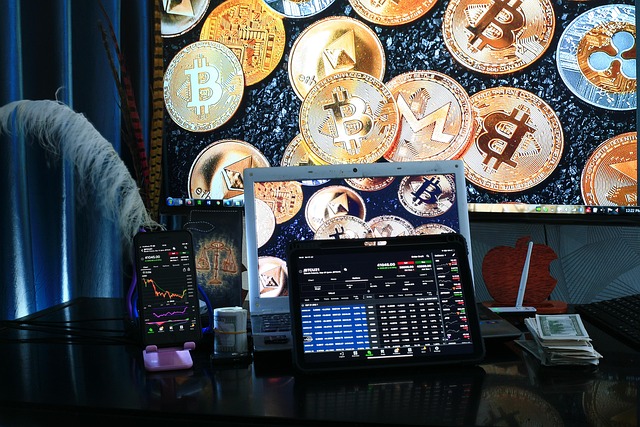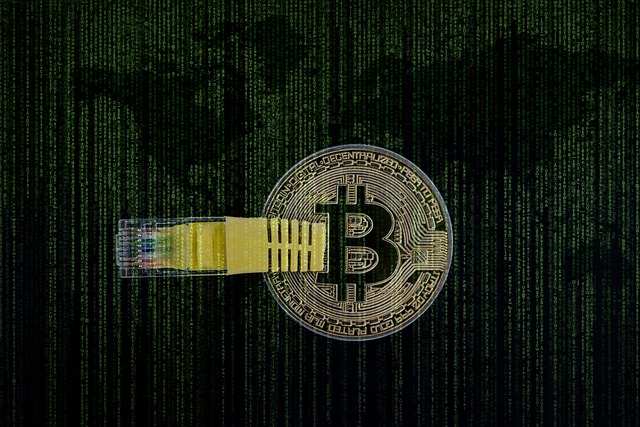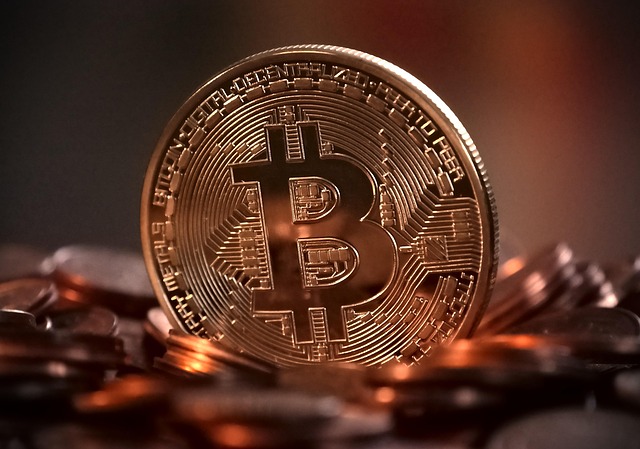SEC and feds charge man over $200M crypto trading scheme
The US Securities and Exchange Commission and federal prosecutors have charged a man they allege created a crypto scheme that swindled 90,000 people out of $200 million in the hopes of earning returns from Bitcoin and forex trading.The SEC said on April 22 that it had charged Ramil Palafox, a dual citizen of the US and the Philippines, claiming he misappropriated over $57 million in investor funds gained through his company, PGI Global, between January 2020 and October 2021.The regulator alleged Palafox used a multilevel marketing model to execute a “Ponzi-like” scam until the company’s collapse in 2021. The SEC said he lured investors through “false claims of crypto industry expertise and a supposed AI-powered auto-trading platform.”The SEC claimed Palafox hosted lavish events in Dubai and Las Vegas to recruit new members who were offered referral bonuses to recruit others and used investor funds to pay other investors to further promote the scheme, as well as to line his own pockets.Excerpt from the SEC’s complaint against Ramil Palafox. Source: SEC“Palafox attracted investors with the allure of guaranteed profits from sophisticated crypto asset and foreign exchange trading, but instead of trading, Palafox bought himself and his family cars, watches, and homes using millions of dollars of investor funds,” said Scott Thompson, associate director of the SEC’s Philadelphia office. The SEC is charging Palafox with violating the anti-fraud and registration provisions of the federal securities laws and is seeking a permanent injunction to ban him from the future sale of securities and crypto assets, repayment of ill-gotten gains and civil penalties. Justice Department files twin actionThe SEC’s complaint is running parallel to action brought by the US Attorney’s Office for the Eastern District of Virginia, which arraigned Ramil Palafox on criminal charges. According to an indictment filed under seal on March 13, federal prosecutors charged Palafox with wire fraud, money laundering and unlawful monetary transactions.Prosecutors alleged Palafox misled investors with false promises of daily returns ranging from 0.5% to 3% from Bitcoin trading and hid information about PGI’s profitability, licenses, and business activity. The indictment said Palafox told investors that substantial returns were being generated via the company’s crypto exchanges and that “his traders were able to make money regardless of whether the price of Bitcoin was going up or down.” However, the Justice Department alleged that, in reality, most investors’ money was never used to buy or trade Bitcoin, and many lost some or all of their funds.Property listed in the indictment that would be forfeited by Palafox if convicted includes over $1 million in cash, 17 vehicles, including two Teslas, a Ferrari 458 Special, two Lamborghinis, and two Porsches, plus a variety of designer bags, wallets, shoes, jewellery and watches.Related: Crypto crime goes industrial as gangs launch coins, launder billions — UNVarious linked companies were included in the scheme, including the Praetorian Group International Trading Inc., the website for which was seized by the Department of Justice in 2021, leading to its UK-based operations being shut down by the UK’s High Court. It’s the agency’s first crypto-related case under its crypto-friendly SEC chair, Paul Atkins, who was sworn in on April 22.The SEC had brought a case against Nova Labs in January, accusing it of selling unregistered securities by offering devices that mined the Helium (HNT) token. The SEC reached a settlement with Nova Labs in April that resulted in the lawsuit being dismissed and a $200,000 civil penalty.Magazine: Uni students crypto ‘grooming’ scandal, 67K scammed by fake women: Asia Express
Former SEC Chair Jay Clayton sworn in as interim US attorney for Manhattan
Former SEC Chair Jay Clayton confirmed that he has been appointed as the interim US Attorney for the Southern District of New York after the Democratic Party’s Senate leader used a “blue slip” to block a vote confirming Clayton’s position.The appointment comes a little over five months after US President Donald Trump nominated Clayton to take on the role. He replaces Damian Williams, who played a major role in the conviction of former FTX CEO Sam Bankman-Fried and other high-profile crypto cases.Clayton said on April 22 his top priorities would be to protect public safety, ensure the integrity of the US financial system, defend national security interests and combat fraud, particularly against the elderly and most vulnerable.The temporary nature of Clayton’s appointment resulted from Democrat Senate Minority Leader Chuck Schumer’s use of a blue slip to block Clayton’s confirmation on April 16, effectively preventing a Senate vote and official confirmation of his position. Blue slips can be used by senators to block US attorney or district court judicial nominees in their home states. Clayton is allowed to serve as interim US attorney for up to 120 days without Senate confirmation. After that, he will need to be approved in a Senate vote or receive a temporary extension of his interim status from Manhattan’s federal court.Trump criticized Schumer’s move in an April 17 Truth Social post, pointing out that Clayton received bipartisan support in the Senate and that Clayton complied with all requests asked of him.Source: Donald TrumpThe interim status of Clayton’s position will last until around Aug. 20. The role will see him as the top law enforcement officer for New York’s Southern District, encompassing the counties of New York, Bronx, Westchester, Rockland, Putnam, Orange, Dutchess and Sullivan.The Southern District of New York is the oldest federal court district in the US, and its location in the country’s financial epicenter means it often handles high-profile cases involving white-collar crime.Clayton has shared mostly positive views on cryptoClayton served as SEC chair between May 4, 2017, and Dec. 23, 2020, and brought 56 cases against crypto firms during his tenure.Related: Oregon AG lawsuit against Coinbase calls XRP unregistered securityHe stated in a December 2021 CNBC interview that he’s a “huge believer in crypto technology,” adding that “the efficiency benefits in the financial system and otherwise from tokenization are immense.”Clayton has also praised Bitcoin (BTC) as a prominent store of value, but didn’t allow Bitcoin exchange-traded products during his time as SEC chair.The first US Bitcoin investment product was approved in 2021 under former SEC Chair Gary Gensler.Magazine: XRP win leaves Ripple and industry with no crypto legal precedent set
Peirce signals SEC ‘reorientation’ under new chair Paul Atkins
US Securities and Exchange Commission member Hester Peirce, currently leading the agency’s crypto task force, offered a preview of what the industry could expect now that Paul Atkins has been sworn in as the regulatory body’s chairman.Speaking to Cointelegraph before the US Senate confirmed Atkins’ nomination and he took his position as SEC chair, Peirce said she welcomed the opportunity to work again with the incoming agency leader. Peirce worked as Atkins’ counsel from 2004 to 2008 during the then-commissioner’s first term at the SEC.“He cares about economic growth and how the markets that we regulate can support economic growth,” Peirce told Cointelegraph. “I would love the chance to work with [Atkins] on trying to reorient the agency so that it does take into consideration all aspects of our mission.”Related: Atkins becomes next SEC chair: What’s next for the crypto industryAtkins, appointed by US President Donald Trump in what many saw as a nod to the crypto industry to replace former chair Gary Gensler, was sworn in on April 21. During his confirmation hearing in the Senate Banking Committee, lawmakers questioned Atkins on his ties to the crypto industry, potentially presenting conflicts of interest in his role helping regulate digital assets. “I expect that he will continue to follow the ethics rules,” said Peirce on Atkins. “I worked for [him] and I have very high regard for his integrity.” SEC’s priorities under new leadership Atkins, now chair, comes to the SEC as the fourth commissioner, with five members typically filling the agency’s leadership positions. Gensler and former Commissioner Jaime Lizárraga stepped down in January. Commissioner Caroline Crenshaw is expected to be the next to depart before 2026, leaving a panel of only three Republican commissioners unless Trump nominates a Democrat.Commissioner Mark Uyeda, whom Trump named as acting chair on Jan. 20, was still scheduled to oversee some of the SEC’s proceedings, including an April 25 roundtable event discussing crypto custody. Uyeda said on April 21 that he was planning to return to his “regular role” as a commissioner, suggesting that Atkins may soon assume all his responsibilities as chair. The shakeup in leadership comes amid many in the industry looking for clarity from the SEC, the courts, and lawmakers after Gensler’s departure. Under the former chair, many accused the SEC of enacting a “regulation by enforcement” approach to crypto, resulting in several high-profile lawsuits against firms including Coinbase, Ripple Labs, and Binance. Since January, the commission has dropped many of the cases.“I think we’re all trying to get to a good place, which is putting some clarity around crypto, some regulatory clarity,” said Peirce.Magazine: SEC’s U-turn on crypto leaves key questions unanswered
Bitcoin analysts target $95K as Trump’s trade war cools — Do BTC futures agree?
Bitcoin (BTC) surged to a 45-day high above $91,000 on April 22, and the upward movement coincided with gold reaching a new all-time high. The price gains reflect investors’ concerns over a potential economic recession amid ongoing global trade tensions.The tides are shifting, but does data support a Bitcoin price rally above $95,000?Bitcoin 2-month futures annualized premium. Source: Laevitas.chIn neutral markets, the Bitcoin futures premium typically ranges between 5% and 10% to compensate for the longer settlement period. At present, the annualized premium stands at 6%, which is not considered particularly bullish, even though BTC appreciated by $6,840 between April 20 and April 22. Some analysts interpret this as a sign that Bitcoin is beginning to decouple from the stock market.Traders’ PTSD could emerge around BTC’s $90K zonePart of this skepticism among traders stems from Bitcoin’s repeated inability to sustain levels above $90,000 in early March. For example, Bitcoin tested the $95,000 mark on March 3, only to fall to $81,464 the following day. This inconsistent performance since the $109,346 peak on Jan. 20 has contributed to a lack of conviction among bullish investors, especially as gold has continued to set new all-time highs during the same period.S&P 500 futures (left) vs. Bitcoin/USD. Source: TradingView / CointelegraphCurrently, Bitcoin is trading 16% below its all-time high, a figure that closely mirrors the S&P 500’s decline of 14.5%. This suggests that the recent era of excessive risk-taking may be behind us. Notably, even at its lowest point below $75,000, Bitcoin’s 32% drawdown was less severe than those experienced by Nvidia (NVDA), Amazon (AMZN), Facebook (META), and Tesla (TSLA).Comments from US Treasury Secretary Scott Bessent on April 22 contributed to easing investor concerns. As reported by Bloomberg, Bessent described the ongoing tariff standoff with China as “unsustainable,” suggesting an increased likelihood of de-escalation. In contrast, US President Donald Trump took to social media to assert that US Federal Reserve Chair Jerome Powell is hindering economic growth by not reducing interest rates.Bitcoin’s gains contrast with investors’ shift to government bondsRegardless of where the blame lies for the subdued economic growth in the United States, demand for short-term US Treasurys has risen, as evidenced by the yield on the 2-year note declining to 3.81% from 4.04% a month earlier. Essentially, investors are accepting lower returns in exchange for the perceived safety of government bonds. Against this backdrop, Bitcoin’s 6.3% price increase over the past 30 days stands out as particularly notable.To determine whether these recent gains have affected professional traders’ sentiment, it is important to examine the BTC options markets. If traders expect a correction, put (sell) options tend to trade at a premium, causing the 25% delta skew metric to rise above 6%. Conversely, bullish sentiment pushes the indicator below -6%.Bitcoin 30-day options skew (put-call) at Deribit. Source: Laevitas.chCurrently, the Bitcoin options market reflects limited enthusiasm following the recent surge to $91,000, with the 25% delta skew indicator at -2%, which remains within the neutral range. According to this metric, the last period of bullish sentiment occurred on Jan. 30, when Bitcoin traded near $105,000. Therefore, there is no clear evidence that large investors or market makers are anticipating a sustained rally above $95,000.Related: Institutional demand could push BTC past $200k in 2025 — AnalystsDespite some weak macroeconomic data, market participants expect a relatively strong first-quarter earnings season. FactSet reports that the “Magnificent 7” companies are projected to achieve earnings growth of 14.8% for the first quarter compared to the prior year.While Bitcoin still has a reasonable chance of revisiting $95,000 or higher, many traders appear to be waiting for further developments in the US-China trade war before placing additional bullish bets.This article is for general information purposes and is not intended to be and should not be taken as legal or investment advice. The views, thoughts, and opinions expressed here are the author’s alone and do not necessarily reflect or represent the views and opinions of Cointelegraph.
XRP Ledger Foundation spots ‘crypto stealing backdoor’ in code library
The XRP Ledger Foundation has identified a “serious vulnerability” in the official JavaScript library used for interacting with the XRP Ledger blockchain network, the nonprofit said.On April 22, blockchain security specialist Aikido said in a blog post that XRP Ledger’s open-source JavaScript library was “compromised by sophisticated attackers who put in a backdoor to steal cryptocurrency private keys and gain access to cryptocurrency wallets.” The JavaScript library includes programs enabling developers to interact with the XRP Ledger and is distinct from the blockchain network itself. ‘“[T]his package is used by hundreds of thousands of applications and websites making it a potentially catastrophic supply chain attack on the cryptocurrency ecosystem,” Aikido said. The XRP Ledger Foundation has already upgraded the code repository to “remove the previously compromised version,” it said in an April 22 post on the X platform.Aikido identified unusual code in XRP’s JavaScript package. Source: AikidoRelated: Coinbase Derivatives lists XRP futuresIt added that several XRP Ledger ecosystem projects — including XRPScan, First Ledger, and Gen3 Games — confirmed that they were not impacted by the incident. The XRP (XRP) token ended the US trading day up more than 3.5% despite news of the security breach, according to CoinGecko. The token has a market capitalization of more than $125 billion and a fully diluted value of approximately $215 billion. XRP’s token price on April 22. Source: CoinGeckoInstitutional adoptionLaunched in 2012, XRP Ledger is among the oldest blockchain networks and specializes in payments and decentralized finance (DeFi) applications for institutions. It has been gaining prominence in recent months as a friendlier US regulatory environment paves the way for broader institutional adoption of the network’s token and ecosystem projects. The XRP token’s price increased by upward of 300% after crypto-friendly US President Donald Trump prevailed in the November presidential election, according to CoinGecko. Since then, several asset managers have asked the US Securities and Exchange Commission (SEC) to approve US-listed exchange-traded funds (ETFs) holding the XRP token. On April 21, Coinbase listed futures contracts for the XRP token on its US derivatives exchange. Magazine: Crypto ‘more taboo than OnlyFans,’ says Violetta Zironi, who sold song for 1 BTC
Chiliz meets with SEC Crypto Task Force amid US market reentry plans
Chiliz, a SportsFi company, has met with the United States Securities and Exchange Commission (SEC) to discuss an investment and reentry into the US crypto market under the crypto-friendly White House and increased push for regulatory clarity surrounding digital assets.According to the meeting request made public by the SEC, Chiliz plans a reentry into the US market around the time of the 2026 FIFA World Cup international football (soccer) tournament. The comeback would be accompanied by a $50 million to $100 million investment in the local market. National Basketball Association and National Football League teams are said to be interested in launching fan tokens if regulatory clarity improves.The meeting with the federal agency was held on April 22 — the same day Chiliz CEO Alexandre Dreyfus shared a photo with Bo Hines, executive director of Trump’s Council of Advisors for Digital Assets, suggesting a second meeting with White House officials.Source: Alexandre DreyfusAccording to the meeting document, Chiliz discussed the proposed structure of a fan token and why “it should not be classified as a security.” Broadly, a security is an investment wherein the investor expects a profit due to the efforts of someone other than the investor.Whether cryptocurrencies and related assets are securities has been a key issue in the regulation of Web3 within the United States.Related: Chiliz’ Socios.com secures in-principle license approval in MaltaChiliz ecosystem sees lower TVL in 2025Chiliz, despite its partnerships with football clubs, gaming teams, and racing companies, has seen a significant drop in activity within its ecosystem. DefiLlama data shows the protocols’ total value locked has fallen from $17.8 million on Dec. 9, 2024, to $6.5 million on April 22, 2025, marking a 63.5% drop.Chiliz TVL. Source: DefiLlamaIts governance token hasn’t fared particularly well, either. According to CoinMarketCap, the Chiliz (CHZ) token price has declined 67% over the past 12 months. The company is known for its fan tokens, which allow enthusiasts to own the official cryptocurrencies of their favorite sports clubs.The company has made headway into the soccer market, partnering with Football Club Barcelona, Paris Saint-Germain, and Manchester City, among others.Related: FIFA launches NFT collection amid 2023 Club World CupChiliz invested $80 million in partnerships within the US market in 2021, the document shows. However, regulatory uncertainty and the fallout from FTX’s collapse led to a “strategic exit” in the following year.The next World Cup is expected to take place in June 2026. The United States will be the main host of the tournament, while Canada and Mexico will act as auxiliary hosts.Magazine: ‘Normie degens’ go all in on sports fan crypto tokens for the rewardsChiliz, a SportsFi company, has met with the United States Securities and Exchange Commission (SEC) to discuss an investment and reentry into the US crypto market under the crypto-friendly White House and increased push for regulatory clarity surrounding digital assets.According to the proposed meeting request made public by the SEC, Chiliz plans a reentry into the US market around the time of the 2026 FIFA World Cup. The comeback would be accompanied by a $50 million to $100 million investment in the local market. NBA and NFL teams are allegedly interested in launching fan tokens if regulatory clarity improves.The meeting with the federal agency was held on April 22 — the same day Chiliz CEO Alexandre Dreyfus shared a photo with Bo Hines, executive director of Trump’s Council of Advisors for Digital Assets, suggesting a second meeting with White House officials. Source: Alexandre DreyfusAccording to the meeting document, Chiliz discussed the proposed structure of a fan token and why “it should not be classified as a security.” Broadly, a security is an investment wherein the investor expects a profit due to the efforts of someone other than the investor.Whether cryptocurrencies and related assets are securities has been a key issue in the regulation of Web3 within the United States.Related: Chiliz’ Socios.com secures in-principle license approval in MaltaChiliz ecosystem sees lower TVL in 2025Chiliz, despite its partnerships with football clubs, gaming teams, and racing companies, has seen a significant drop in activity within its ecosystem. DefiLlama data shows the protocols’ total value locked has fallen from $17.8 million on Dec. 9, 2024, to $6.5 million on April 22, 2025, marking a 63.5% drop.Chiliz TVL. Source: DefiLlamaIts governance token hasn’t fared particularly well either. According to CoinMarketCap, the Chiliz (CHZ) token price has declined 67% over the past 12 months. The company is known for its fan tokens, which allow enthusiasts to own the official cryptocurrencies of their favorite sports clubs.The company has made headway into the soccer market, partnering with Football Club Barcelona, Paris Saint-Germain, and Manchester City, among others.Related: FIFA launches NFT collection amid 2023 Club World CupChiliz invested $80 million in partnerships within the US market in 2021, the document shows. However, regulatory uncertainty and the fallout from FTX’s collapse led to a “strategic exit” in the following year. The next World Cup is expected to take place in June 2026. The United States will be the main host of the tournament, while Canada and Mexico will act as auxiliary hosts. Magazine: ‘Normie degens’ go all in on sports fan crypto tokens for the rewards
Bitcoin breaks downtrend with spike toward $92.6K, but who’s behind the price momentum?
Bitcoin (BTC) price surged over the Easter weekend, jumping 9% and crossing the $91,000 threshold on April 22. This strong performance diverged sharply from the stock market’s lukewarm rebound and mirrored gold’s bullish behavior, which briefly touched a new all-time high of $3,500. While the BTC rally and its growing decoupling from equities are noteworthy, it’s the derivatives market that offers an even more bullish signal.According to data from CoinGlass, Bitcoin open interest (OI) soared by 17%, reaching a 2-month high at $68.3. OI measures the total capital invested in BTC derivatives, and such an uptick shows a growing bullish sentiment among traders. The market is currently in contango — a situation where futures prices (notably CME Bitcoin futures) are higher than the spot price. This typically occurs because investors anticipate rising prices and take advantage of leverage tools offered by exchanges, allowing them to gain greater exposure through futures than they could with direct spot purchases.This raises two questions: Who is buying, and why?Institutional interest reawakensA key metric for understanding investor composition is the Coinbase Bitcoin Premium Index. It measures the percentage price difference between Bitcoin on Coinbase Pro (BTC/USD) and Binance (BTC/USDT). Since Coinbase Pro caters predominantly to US-based institutional investors, while Binance has a broader global retail audience, this premium can indicate where the buying pressure is coming from.While the first half of April showed strong retail dominance, April 21–22 saw institutional demand kick in, with the Coinbase premium rising to 0.16%, per CoinGlass.Coinbase Bitcoin premium index. Source: CoinGlassMichael Saylor’s Strategy could be among those buyers. On April 21, Saylor announced the acquisition of 6,556 more BTC for approximately $555.8 million at an average price of ~$84,785 per coin. This brings MicroStrategy’s total holdings to an eye-watering 538,200 BTC, worth approximately $48.4 billion at current prices. On a smaller scale, Japan-based Metaplanet also added 330 BTC to its treasury, pushing its total to 4,855 BTC, the company’s CEO announced on the same day.Meanwhile, investors who favor traditional financial instruments over direct Bitcoin holding have also begun to renew their interest. According to the CoinGlass data, on April 21, BTC ETFs recorded $381 million in inflows — a much-needed reversal after a prolonged period of heavy outflows. Since February, ETFs had suffered 33 days of net outflows versus just 21 days of inflows, with outflows strongly dominating in volume. The recent reversal suggests renewed confidence, particularly from TradFi-aligned investors.Related: Bitcoin risks 10%-15% BTC price dip after key rejection near $89KThe dollar fades as Bitcoin rises Since tariff fears took grip of the market, institutional investors have kept Bitcoin and equities at arm’s length, but something shifted over the Easter weekend.Crypto analyst Rekt Capital noted that Bitcoin has decisively broken out of its multimonth downtrend“The multimonth downtrend is over. And when a technical downtrend is broken, technical uptrends emerge.”BTC/USD 1-day chart. Source: Rekt CapitalAnother, more macroeconomic, factor may be the increasing tension between US President Donald Trump and Federal Reserve Chair Jerome Powell. Their growing rift, centered on concerns about inflationary pressure from tariffs and the Fed’s reluctance to cut rates, has cast a shadow over the US dollar.The US Dollar Index, which tracks the dollar’s value against a basket of currencies, has been in freefall since February, reaching lows last seen in 2022. Trump’s public pressure on Powell, and speculation that he might attempt to remove him or other Fed officials, is fueling anxiety over the Fed’s independence — a foundational pillar of the US financial system. The potential consequences of a falling dollar for the global economy are difficult to predict, but one thing is clear: Bitcoin stands poised to be a major beneficiary. A decentralized, censorship-resistant money governed solely by code, with a fixed supply schedule and no central authority to manipulate its issuance. As confidence in traditional monetary systems continues to erode, Bitcoin’s narrative grows ever stronger.This article does not contain investment advice or recommendations. Every investment and trading move involves risk, and readers should conduct their own research when making a decision.
DeFi Development Corp adds $11.5M SOL, shares jump 12%
DeFi Development Corporation, formerly known as Janover, is ramping up its Solana treasury strategy following a buyout led by Kraken executives.According to an April 22 announcement, the company added 88,164 Solana (SOL) to its treasury, worth $11.5 million and bringing its Solana stake to $34.4 million.On April 7, DeFi Development Corporation was acquired by a group of former Kraken executives. As part of the deal, the company announced a shift toward crypto, including a rebrand and a Solana-based reserve treasury. Before the transition, Janover operated in the real estate financing space, linking lenders with commercial property buyers.Since the takeover, the company has made multiple purchases of SOL, including a buy of $10.5 million on April 16. With the latest purchase, DeFi Development Corporation’s total holdings stand at 251,842. The company plans to stake the tokens to generate additional yield.As of this writing, shares of DeFi Development Corporation (JNVR) are up 12.83% on the news, according to Google Finance.DeFi Development Corporation’s intraday performance. Source: Google FinanceStaking is the process of locking up cryptocurrency to help secure a blockchain network and earn rewards in return. Solana briefly surpassed Ethereum in total staked value on April 21, with over $53.9 billion worth of SOL staked by more than 500,000 unique wallet holders, yielding an 8.31% annualized return.Crypto treasury strategies gaining tractionSince Michael Saylor’s Strategy began adding Bitcoin (BTC) to its balance sheet in August 2020, more companies have followed suit with crypto treasuries, often seeing a boost in their stock prices as a result.Japanese company Metaplanet announced its Bitcoin treasury in 2024 and recorded a 4800% rise in its share price as of Feb. 10, though it has fallen since then. Semler Scientific, a healthcare technology company, saw a 30% stock price rise after it announced its BTC reserve treasury.Other companies are expanding their digital assets approach to other cryptocurrencies, such as SOL. Upexi, a Nasdaq-listed supply chain firm, recently announced the creation of a SOL treasury to diversify its assets.Magazine: Memecoins are ded — But Solana ‘100x better’ despite revenue plunge








